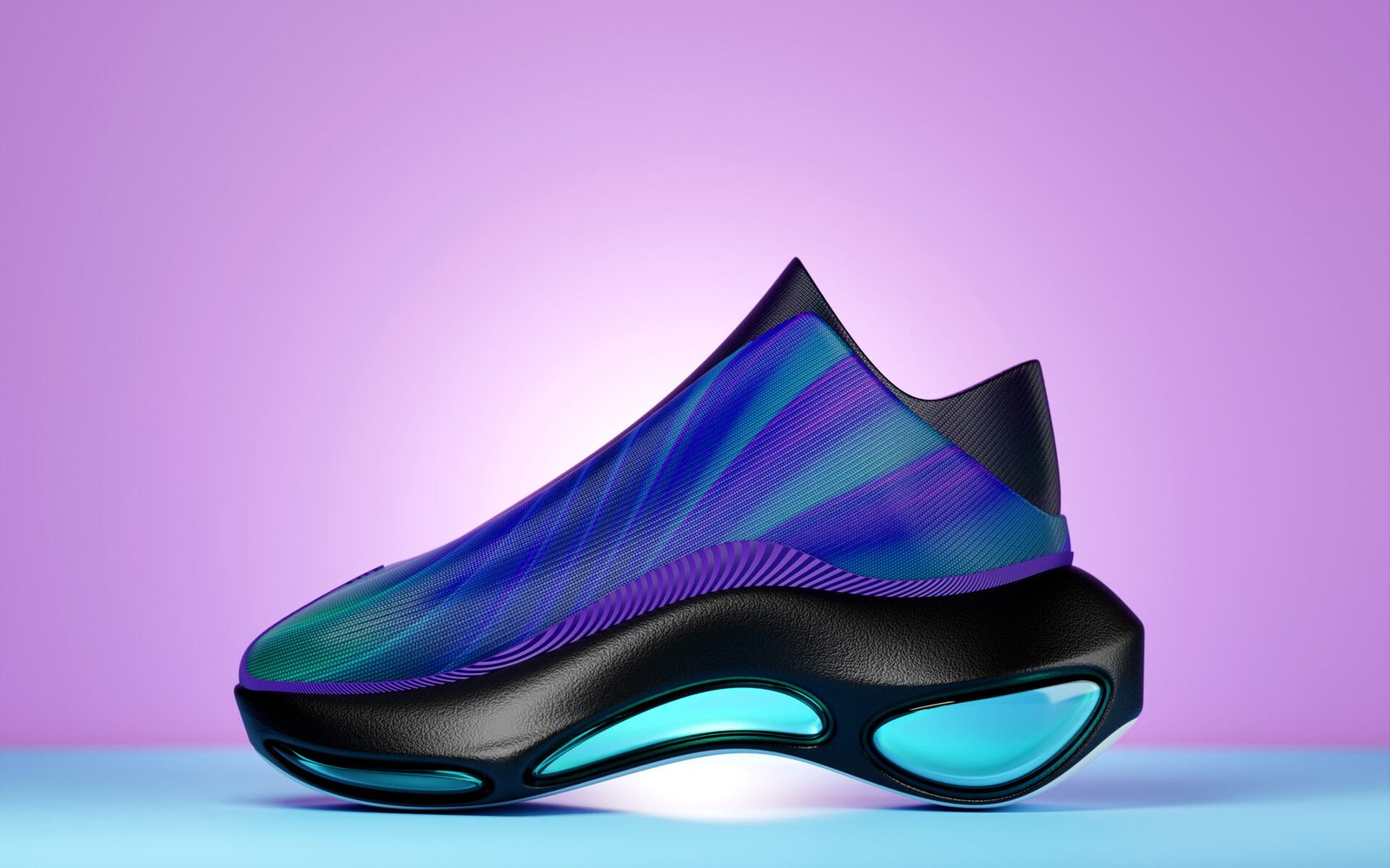- Introduction
- The Emergence of 3D Printing in Fashion
- Customization and Personalization Unlocking the World of Unique Fashion
- Design Innovation and Complexity The Revolutionizing Effect on Fashion Aesthetics
- Sustainable Manufacturing Practices Creating Fashion with a Conscience
- 3D-printed fashion
- Conclusion
- FAQ
- Q: What is fashion 3D printing?
- Q: How does fashion 3D printing work?
- Q: What are the advantages of fashion 3D printing?
- Q: How is 3D printing changing the fashion industry?
- Q: What are some examples of fashion 3D printing applications?
- Q: Which materials are used in fashion 3D printing?
- Q: Are there any fashion brands using 3D printing?
- Q: How is 3D printing used in the fashion world?
- Q: Can 3D printing be used to create sustainable fashion?
- Q: What is the future of fashion 3D printing?
- Introduction
- The Emergence of 3D Printing in Fashion
- Customization and Personalization Unlocking the World of Unique Fashion
- Design Innovation and Complexity The Revolutionizing Effect on Fashion Aesthetics
- Sustainable Manufacturing Practices Creating Fashion with a Conscience
- 3D-printed fashion
- Conclusion
- FAQ
- Q: What is fashion 3D printing?
- Q: How does fashion 3D printing work?
- Q: What are the advantages of fashion 3D printing?
- Q: How is 3D printing changing the fashion industry?
- Q: What are some examples of fashion 3D printing applications?
- Q: Which materials are used in fashion 3D printing?
- Q: Are there any fashion brands using 3D printing?
- Q: How is 3D printing used in the fashion world?
- Q: Can 3D printing be used to create sustainable fashion?
- Q: What is the future of fashion 3D printing?
Introduction
Fashion, an ever-evolving art form, has been an integral part of human culture for centuries. From the elegant garments of ancient civilizations to the avant-garde designs of modern couture, fashion has constantly reflected societal trends and individual expression.
However, with the advent of technology, the fashion industry is undergoing a radical transformation. One such technological innovation that is revolutionizing the field is 3D printing.
A Brief Overview of the Fashion Industry’s Evolution
Throughout history, fashion has served as a means of communication and self-expression. It has evolved from simple utilitarian garments to intricate works of art that act as symbols of social status and personal identity. The fashion industry transformed from traditional craftsmanship to industrial manufacturing during the Industrial Revolution in the late 18th century.
This shift allowed for mass production, making fashionable clothing more accessible to a broader range of people. In recent decades, globalization and fast-fashion practices have accelerated production cycles and introduced disposable consumerism into the fashion industry.
Fast-fashion brands churn out cheaply made garments at alarming rates, resulting in environmental degradation and exploitative labor practices. As consumers became more aware of these issues, there emerged a growing demand for sustainable and ethical alternatives.
An Introduction to 3D Printing Technology
Enter 3D printing, a revolutionary technology that allows for the creation of three-dimensional objects based on digital designs. Also known as additive manufacturing or rapid prototyping, 3D printing involves layering materials on top of each other until a complete object is formed.
Unlike traditional subtractive manufacturing methods where excess materials are cut away from a larger piece, 3D printing builds objects layer by layer using various materials such as plastics, metals, ceramics, or even biological substances. The concept behind 3D printing dates back to the early 1980s, when Chuck Hull invented stereolithography, an additive manufacturing technique that used photopolymers to create solid objects.
Since then, 3D printing has come a long way, evolving into a versatile technology with applications in numerous industries. Initially utilized for prototyping purposes, 3D printing has expanded its reach into fields as diverse as aerospace, medicine, architecture, and now fashion.
In the context of the fashion industry, 3D printing has brought about a paradigm shift by challenging traditional manufacturing methods and enabling designers to unleash their creativity without the constraints imposed by conventional techniques. By harnessing the power of computer-aided design (CAD) software and advanced printing technologies, fashion designers can now bring elaborate concepts to life with ease.
With this understanding of the fashion industry’s transformation and an introduction to 3D printing technology, we will delve deeper into how this groundbreaking innovation is reshaping the landscape of fashion in terms of design possibilities and sustainable manufacturing practices. Join us on this journey as we explore the impact of 3D printing on haute couture, customization potential, and sustainability within the world of fashion.
The Emergence of 3D Printing in Fashion

Changing the Face of Manufacturing
With its ability to transform digital designs into physical objects, 3D printing has revolutionized manufacturing processes across industries. This technology has now entered the world of fashion after finding favor in industries like aerospace, automotive, and healthcare. The unique capabilities offered by 3D printers have sparked immense interest and opened up a world of possibilities for designers and manufacturers alike.
A Paradigm Shift in Design
Traditional fashion design has long relied on manual labor and mass production techniques. However, the advent of 3D printing has brought about a paradigm shift in the design process.
Designers can now create intricate and complex designs with ease, transcending the limitations imposed by traditional manufacturing methods. This newfound freedom allows for unprecedented creativity and innovation within the fashion industry.
Pioneers in Fashion
Early adopters within the fashion industry recognized the potential that 3D printing held for transforming their craft. Leading fashion houses such as Chanel, Iris van Herpen, and Alexander McQueen were among the pioneers who incorporated 3D printing into their collections.
Their visionary use of this technology paved the way for others to follow suit. Chanel’s Métiers d’Art collection showcased stunning jewelry pieces created using 3D printing techniques combined with traditional craftsmanship.
This fusion resulted in exquisite accessories that blended modernity with timeless elegance. Iris van Herpen, known for her avant-garde creations, pushed boundaries by integrating 3D-printed elements into her designs.
Her collection featured elaborate dresses adorned with intricate geometric patterns and structures that were only possible through additive manufacturing. Alexander McQueen’s collaboration with designer Michael Schmidt produced remarkable pieces that fused traditional tailoring with cutting-edge technology.
Their “Plato’s Atlantis” collection featured digitally printed garments that showcased a seamless blend of artistry and technology. These early adopters set the stage for the widespread adoption of 3D printing within the fashion industry.
Their experimentation and innovative use of the technology demonstrated its potential to revolutionize traditional design and manufacturing processes. As a result, an increasing number of designers have begun to explore the endless possibilities offered by 3D printing, propelling this revolutionary technology further into the forefront of fashion.
Customization and Personalization Unlocking the World of Unique Fashion

In the realm of fashion, one size does not fit all. Each person has their own distinct style, preferences, and body shape.
This is where 3D printing technology shines, offering a remarkable degree of customization and personalization. With traditional manufacturing methods, mass-produced garments often lack the ability to cater to individual tastes.
However, 3D printing allows for the creation of unique designs tailored specifically to an individual’s preferences. By harnessing the power of computer-aided design (CAD) software and innovative materials, fashion designers can bring their clients’ visions to life in ways previously unimaginable.
Whether it’s a customized pattern or a personalized accessory, 3D printing empowers the consumer with a sense of individuality that extends beyond mere clothing choices. Moreover, one of the most significant advantages offered by 3D printing in fashion is its ability to provide a personalized fit for garments and accessories.
Traditional manufacturing processes often struggle to achieve a perfect fit for each unique body shape. However, with 3D scanning technology and precise measurements taken into consideration during design iterations, 3D-printed garments can be tailored perfectly to an individual’s measurements.
Design Innovation and Complexity The Revolutionizing Effect on Fashion Aesthetics
With its boundless freedom in design possibilities, 3D printing has revolutionized aesthetics within the fashion industry. It enables designers to explore intricate and complex designs that were once restricted by traditional manufacturing methods.
From elaborately patterned dresses with intricate details to avant-garde accessories boasting complex structures, nothing seems out of reach anymore with this cutting-edge technology. The marriage between 3D printing technology and fashion has also encouraged the integration of unconventional materials into clothing and accessories, pushing the boundaries of creativity.
Designers are now experimenting with innovative materials such as biodegradable filaments, carbon fiber composites, and even recycled plastics. These materials not only contribute to the uniqueness of the final product but also promote sustainable practices within the industry.
Sustainable Manufacturing Practices Creating Fashion with a Conscience
In an era where sustainability is paramount, 3D printing presents itself as a game-changer for the fashion industry’s manufacturing practices. By shifting from mass production to on-demand production, 3D printing helps reduce waste significantly.
Unlike traditional manufacturing methods that often result in surplus inventory due to minimum order requirements, 3D printing enables designers to produce items precisely when needed. This just-in-time manufacturing approach allows for a more streamlined supply chain and eliminates excess inventory that would typically contribute to environmental strain.
Additionally, 3D printing also opens up opportunities for the use of eco-friendly materials such as biodegradable filaments derived from renewable sources like cornstarch or algae-based plastics. With its ability to minimize waste and incorporate sustainable materials, 3D printing offers a promising path towards a more environmentally conscious future for fashion.
3D-printed fashion
Haute Couture and Avant-Garde Designs
In the realm of haute couture, where craftsmanship and exclusivity reign supreme, 3D printing has emerged as a groundbreaking tool for designers to push the boundaries of design. Renowned fashion houses like Chanel, Iris van Herpen, and Alexander McQueen have embraced this technology to create extraordinary pieces that blend traditional craftsmanship with futuristic aesthetics. By incorporating 3D printing into their collections, these designers can produce intricate and architectural garments that would be otherwise impossible to achieve using traditional manufacturing methods.

Exploration of How High-End Designers Incorporate 3D Printing into Their Collections
High-end designers are increasingly leveraging the potential of 3D printing to enhance their creative processes. Through collaborations with engineers and tech experts, they are able to harness the power of this technology in innovative ways. An example is Iris van Herpen’s collaboration with architect Philip Beesley for her “Hybrid Holism” collection.
They employed intricate laser-cutting techniques combined with 3D-printed elements to produce ethereal garments that resembled delicate architectural structures. Designers are also using 3D printing for rapid prototyping before finalizing designs for production.
This allows them to test various iterations more efficiently than ever before, reducing development time significantly without compromising on quality or aesthetics. The ability to visualize and modify designs digitally before committing them to physical form has revolutionized the design process in high-end fashion.
Showcasing Avant-Garde Creations Pushing Boundaries
With its ability to bring imagination into reality, 3D printing has become a catalyst for avant-garde creations in fashion. Designers now have the freedom to experiment with unprecedented shapes, textures, and materials that defy conventional norms.
We see designers like Anouk Wipprecht incorporating technology into their designs, using interactive 3D-printed garments that respond to the wearer’s movements or surroundings. These boundary-pushing creations not only challenge the traditional understanding of fashion but also blur the lines between fashion, art, and technology.
By embracing 3D printing technology, designers can create garments that are not only visually striking but also functional and wearable. From avant-garde runway shows to museum exhibitions, these extraordinary creations captivate audiences and inspire future generations of fashion enthusiasts and innovators.
Conclusion
3D printing has undeniably revolutionized the fashion industry, offering designers unparalleled possibilities for customization, innovation, and sustainability. Through its applications in haute couture and avant-garde designs, high-end designers have pushed the boundaries of fashion by seamlessly merging traditional craftsmanship with futuristic technology.
The ability to create intricate structures with precision while using unconventional materials has opened up new avenues for creativity in the industry. As this technology continues to evolve and become more accessible, we can expect further disruptions in how fashion is conceived and produced.
The democratization of 3D printing may eventually pave the way for personalized couture pieces to become more accessible to a wider audience. With sustainability being a pressing concern for the industry, 3D printing offers a promising solution by enabling on-demand production while minimizing waste.
Ultimately, as we witness designers constantly pushing beyond established limits through their avant-garde creations powered by 3D printing, we are reminded that fashion is an ever-evolving art form that thrives on innovation. This intersection of technology and design invites us to envision a future where self-expression through clothing knows no bounds—a world where creativity flourishes without constraints.
FAQ
Q: What is fashion 3D printing?
A: Fashion 3D printing refers to the use of 3D printing technology in the fashion industry to create clothing, accessories, and other fashion-related items.
Q: How does fashion 3D printing work?
A: Fashion 3D printing works by using specialized 3D printers to create garments and accessories layer by layer, using various materials such as textiles, plastic, or metal.
Q: What are the advantages of fashion 3D printing?
A: Fashion 3D printing offers numerous advantages, including the ability to create intricate and complex designs, customization options, reduced waste in the production process, and the potential for faster production times.
Q: How is 3D printing changing the fashion industry?
3D printing is revolutionizing the fashion industry by providing new possibilities for design, sustainability, and customization. It allows designers to push boundaries and create innovative garments that were previously not possible with traditional manufacturing methods.
Q: What are some examples of fashion 3D printing applications?
A: Fashion 3D printing can be used to create various items such as clothing, shoes, jewelry, handbags, and fashion accessories. Designers can experiment with different shapes, geometries, and materials to create unique and avant-garde pieces.
Q: Which materials are used in fashion 3D printing?
A: Fashion 3D printing can utilize a wide range of materials, including textiles, plastics, metals, and even organic materials such as silk or cellulose-based fibers. The choice of material depends on the desired characteristics of the final product.
Q: Are there any fashion brands using 3D printing?
Yes, several fashion brands have embraced 3D printing in their collections. Notable examples include Danit Peleg, a fashion designer known for her 3D-printed clothes, and various Spanish fashion brands that have incorporated 3D printing into their runway shows.
Q: How is 3D printing used in the fashion world?
3D printing is used in the fashion world for various purposes, including prototyping, creating unique and exclusive pieces, reducing waste in production, and exploring new design possibilities. It is also used to create fashion accessories such as jewelry, belts, and bags.
Q: Can 3D printing be used to create sustainable fashion?
Yes, 3D printing has the potential to contribute to sustainable fashion. It allows for optimized production processes, reduces waste, and enables customization, all of which are key elements in the shift towards more sustainable practices in the fashion industry.
Q: What is the future of fashion 3D printing?
The future of fashion 3D printing looks promising. As the technology continues to advance, we can expect to see more widespread adoption of 3D printing in the fashion industry, increased use of sustainable materials, and even the possibility of consumers printing their own clothing at home.




















